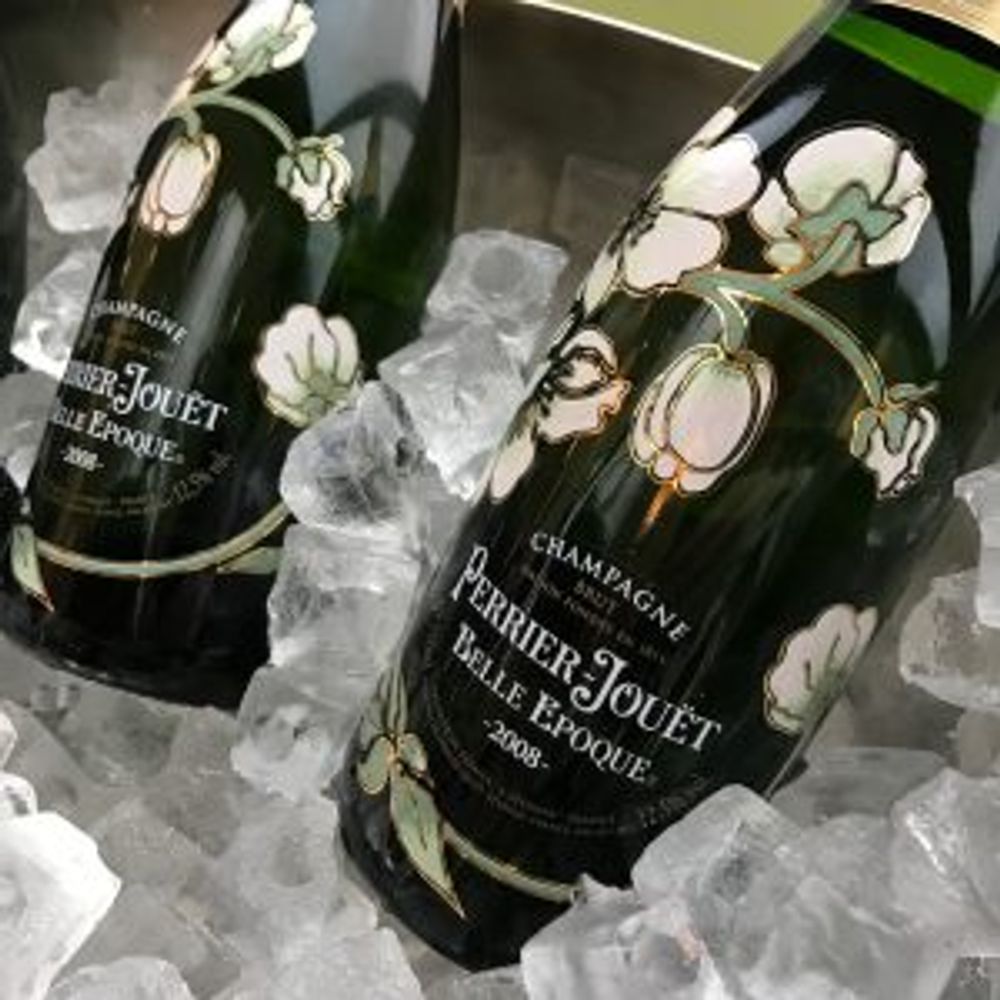The new 2008 vintage of Belle Époque tasted alongside Belle Époque Rosé 2007 from Magnum with Perrier-Jouët’s chef de cave Hervé Deschamps.
I love a good story. I think that’s why wine appeals to me so much. It’s a mixture of art, history, geography, and science all wrapped up in this tasty bundle in a glass.
I guess that’s why I’ve always had a slight fondness for Perrier-Jouët’s flagship champagnes, the Belle Époque series.
This year marked the release of the 2008 vintage, and I was lucky enough to be asked down to give it a try.

What Is It?
The idea of it all stems from La Belle Époque, a period of world history in the late 1800s and early 1900s where everything seemed brilliant with the world.
From Germany to Brazil, there was peace, prosperity, and all round good fun. Nowhere was that more prevalent than in naughty Paris, and just down the road in Champagne they were quick to catch on.
The marketing machine went into overdrive and Champagne became the drink to have. More people than ever around the world were making money and having fun, and champagne was the drink to toast the success.
It was with that in mind that Perrier-Jouët asked leading Art Nouveau guru, Emille Gallé, to come up with a bottle design. The famous white Japanese flowers were the outcome, but unfortunately production costs were just too daft.
It was only in the late 1960s that the first Belle Époque was born as the crème de la crème of Perrier-Jouët’s output. Now who wants to tell me that’s not a good story?!
What Does It Taste Like?
Oh, you want to know about the wine itself?
Oh ok then, here we go.
2008 wasn’t an altogether amazing year in Champagne, but the Indian summer that followed a cold spring really helped, perversely, with both the ripeness and freshness of the Chardonnay grapes that makes up half the blend.
It’s that Chardonnay that gives the finesse and fruit of apple, white peach, and lemon, and the six years of lees-ageing gives an incredibly integrated yeast note of brioche and pastry. A touch of something malo, a gorgeous creamy mousse, and a finish that just doesn’t stop and you’re laughing all the way to something very premium, albeit still very young and fresh.
Who Buys It?
Perrier-Jouët specifically targets the on-trade with Belle Époque.
Quantities aren’t massive, especially once the royals of Monaco have taken their delivery, so large retail partners aren’t going to work. They do do a bit of work with Waitrose, Fortnum and Mason’s, and various small independents. But it’s the upmarket bars and restaurants that are the main target audience. With prices for the 2007 at around £130 per bottle at retail price, you can understand why.

Hervé Deschamps at the top of London’s Gherkin tower
How To Sell It?
I spoke quite a bit with chef de cave Hervé Deschamps about this, as there’s always something a bit tough for me when talking about young vintage Champagnes.
When the average punter orders a bottle of Champagne they almost expect to have an explosion of autolytic yeast character. Most Non-Vintage styles play up to this…and then you try a younger Vintage style. There is more autolytic character there – after six years of second ferment and autolysis that’s what you’d expect – but the integration of it makes it feel a lot softer and I can appreciate why some customers might struggle with that.
It’s one for the sommeliers of the world to earn their coin on.
I really enjoyed Belle Époque 2008 and the 2007 Belle Époque Rosé on show. I think a high-end Champagne list would look a bit naked without at least one vintage of Belle Époque.
If someone ever fancies taking me out for a nice dinner, then I’ll be disappointed if I can’t order a bottle or two of this.
Cheers


































